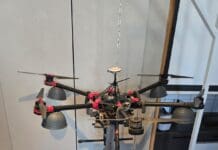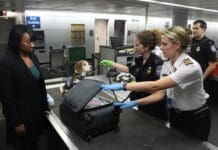This post is also available in:
 עברית (Hebrew)
עברית (Hebrew)
An integration of several data systems will help search and rescue teams locate survivors, enabling crucial data to serve coastguard operators. The technology is expected to set a new standard for real-time and historical ISR mission data in a Common Operating Picture.
CarteNav has integrated MetOcean Telematics’ Iridium Self Locating Datum Marker Buoy (iSLDMB) with both AIMS-ISR for real-time mission management and AIMS-C4 for search and rescue (SAR) command & control.
iSLDMB is rugged and compact to meet the stringent performance requirements of coastguards for search and rescue operations in the open ocean. The buoy is deployed to communicate subsurface ocean currents and temperature in real-time – providing critical data to decision makers tasked with rescuing a person, vessel, or aircraft lost at sea.
The drift marker buoys are deployed by the aircrew and can now be tracked by the AIMS-ISR mission system. The buoys provide data via the Iridium network to the onboard mission system – providing insight into the ocean environment.
Tracking these buoys provides information to onboard operators to conduct the most effective search and rescue plan. The buoy data is displayed directly alongside other sensor data such as radar, AIS, and ViDAR – maximizing operator situational awareness and search effectiveness, according to airmedandrescue.com.
For rescue and search coordinators on the ground, AIMS-C4 provides the real-time and historical data from all deployed ISLDMB data in a Common Operating Picture.
The use of real-time and historical data allows the rescue coordination center to create SAR models and plans to achieve mission success, according to the company announcement.


























